 It always seems like this time of year brings with it a huge “to do” list in the garden, but in many ways, we have had a bit of a reprieve because it has still been quite cold, especially at night. Things which we might have done by now in other years remain undone, but in a lot of cases, it is no bad thing.
It always seems like this time of year brings with it a huge “to do” list in the garden, but in many ways, we have had a bit of a reprieve because it has still been quite cold, especially at night. Things which we might have done by now in other years remain undone, but in a lot of cases, it is no bad thing.
For example, there is still plenty of time to deadhead or prune (depending on the type) your hydrangeas, in the desperate hope there will be no more frosts or evil cold winds. A customer recently felt sure their hydrangea Annabel had died, because they had seen leaves on all their others, but not this one. Annabel is a H. arborescens type, and these, along with H. paniculata, flower on new growth, so look, frankly, like a bunch of sticks at this time of year.

Fear not, they will shoot, but can also be pruned back to 6 inches or so from the ground at this time of year to help them develop a firm framework. Annabel in particular, a very stylish and beautiful plant, has huge greeny cream heads, so it is best not to allow it to get too rangy, else the heads will flop towards the ground. If you are cutting back hard, give them a good feed as well – liquid or slow release, which ever you prefer.
The hydrangeas on which our customer was seeing the leaves were of the mophead or lace cap (H. macrophylla) and these flower on old growth, so it is important to leave a good framework if you want to be sure of flowers this year. Just take off the old flower head and maybe back to one set of buds below that. To renovate or reduce in size, do this in early autumn so that the wood can mature ready to produce next year’s blooms.
Take the risk and do yours too, and at the same time prune your hardy fuchsias. If they are the hedging type, and you want to control the size, you can prune right down to a few buds – they will put in 3 or 4 feet of growth easily in a season. For the specimen shrub types, prune back to a healthy pair of buds, but keeping a size and framework to the plant which pleases your eye and fits the space you have it in, allowing for a good 6 inches of growth over the season.
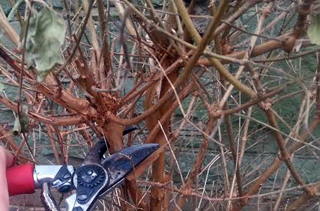 If it needs a complete reshape, do that in the autumn and spread the whole renovation over 3 years, so that the plant doesn’t go into shock. By the way, we are starting to see bedding fuchsias in the shops now. These are not hardy, by and large, so hang fire on putting these (and any other bedding you have enthusiastically bought) out until the nights are consistently warmer (8-10 degrees).
If it needs a complete reshape, do that in the autumn and spread the whole renovation over 3 years, so that the plant doesn’t go into shock. By the way, we are starting to see bedding fuchsias in the shops now. These are not hardy, by and large, so hang fire on putting these (and any other bedding you have enthusiastically bought) out until the nights are consistently warmer (8-10 degrees).
Other jobs you can need to get on with now include removing the last of any of last year’s dead herbaceous growth, which may have been left to protect the plant against frosts or because we are influenced by TV gardeners to view it as “structural”. We’re in the “it looks untidy” camp. This whole structural thingy covers mainly tall, slightly woody herbaceous growth, such as you see on fennel, cardoons (ornamental artichokes), teasels and so on.
All of these should now have lovely fresh green growth around the base, so any structural impact has gone anyway. Chop with abandon. The same applies to grasses, but be aware of new growth tips of grasses appearing at the base. You don’t want to chop these off, since grasses grow bottom up, if that makes sense. Any tips you chop now will not rejuvenate and you’ll end up with grasses that have blunt tops for the year.
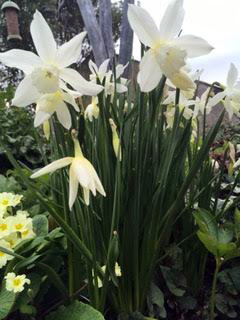
Also, we are in that period when the cheery yellows of daffodils, sadly in full flow, but earlier varieties are already on the wane. To get longevity and healthy future shows from your daffodils, pinch off the burgeoning seed head forming at the base of where the flower was, but do not yet remove the leaves. It’s quite logical if you think about it. Any plant has finite resources of energy, and energy going into seed production is lessening the amount going back into the bulb to aid next year’s flowering, and leaving the leaves on means that more energy can be absorbed from sunlight.
At the same time, give your bulbs a feed – a seaweed-based feed is good, because it provides a foliar feed (ie absorbed through the leaves) as well as being absorbed through the roots. Some of the more chemical feeds cannot be applied to the leaves, so check the label carefully. We have had a particularly lovely display this year from daffodil Ice Follies.
A tall, proud, meaty, pale creamy yellow daff, which we would heartily recommend if you like a bit of variety. For something more ethereal looking, try N. Thalia or Niveth. Thalia is delicate, pale cream and double headed, and looks like a ephemeral fairy on its stalk. Niveth has a similar structure, but is a delicate mix of lemon yellow and cream. Both are beautiful eye-catching, and a little later, to extend the daffodil season.
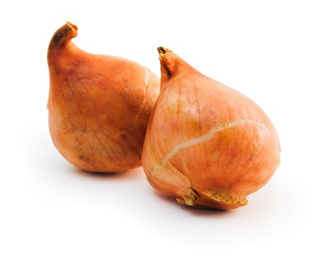 As we mourn the end of the daffs for another year, we can be heartened though by the appearance of the tulips in all their glory and multifarious colours. If there is one bulb that gives something for everyone, then this is it – tall, short, frilly, sleek, stylish or just plain garish, take your pick.
As we mourn the end of the daffs for another year, we can be heartened though by the appearance of the tulips in all their glory and multifarious colours. If there is one bulb that gives something for everyone, then this is it – tall, short, frilly, sleek, stylish or just plain garish, take your pick.
We’ve yet to meet someone who doesn’t like tulips. While the bulb planting period has long since gone, you will certainly be able to buy ready grown pots, which will provide colour for a good few weeks. There is a school of thought which says tulips should be treated like annuals, and thrown away after flowering. It is true they are less likely to return than daffs or many other spring bubs, but don’t give up that easily.
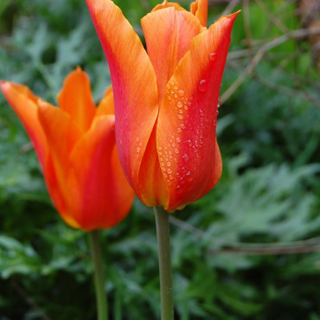 If they are planted into a well drained spot, with grit mixed in or underneath, or allowed to dry over the summer after flowering, and replanted into a pit, the re-flowering rate can be quite high. In fact, Helen’s neighbours have some T. Ballerina in the garden which pre-date both of our living here, so by our reckoning they are at least 15 years old. Nothing ventured, nothing gained.
If they are planted into a well drained spot, with grit mixed in or underneath, or allowed to dry over the summer after flowering, and replanted into a pit, the re-flowering rate can be quite high. In fact, Helen’s neighbours have some T. Ballerina in the garden which pre-date both of our living here, so by our reckoning they are at least 15 years old. Nothing ventured, nothing gained.
By the time you read this, the garden centres and plant stalls at country markets will also be full of little vegetable plants, pleading “buy me, buy me”. If you are someone fearful of growing from seed, or simply haven’t had the time, this is a great way to get a head start on your home growns.
With tomatoes, everyone’s favourite starter plant, please keep in mind that if temperatures drop below 12 degrees for a period, they will stop dead, and it’s very hard to get the growth going again. They will likely languish. So if those night-time temperatures stay low, keep the plants in the pots or cells you bought them in, and keep them in your house on a window sill for a while. Same applies to cucumbers and anything else you might grow under cover.
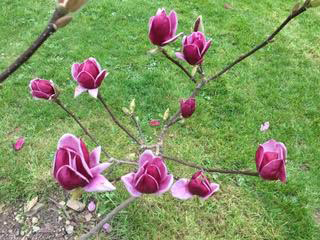
The outdoor plants such as peas, beans (although hold off runner till the end of the month), brassicas of all types can go straight out, but beware our feathered friends and rodentia. Nothing is tastier than a sprouting pea or bean, or a fresh soft green leaf.
And now, you can also do your first sowings of carrots, beetroots, parsnips, radishes and turnips. The latter two are so easy, and great as an introduction to gardening if you have children, but don’t really like, so if anyone has any good turnip recipes, please let us know. Burp.
And don’t forget Cornwall’s wonderful Spring gardens; our speciality. The camellias, and increasingly so the magnolias and azaleas are fabulous this year. Get yourself to Caerhays, Heligan, Trewithen or Pencarrow, among others, and see the fruits of years of careful nurturing. You too could have some.

